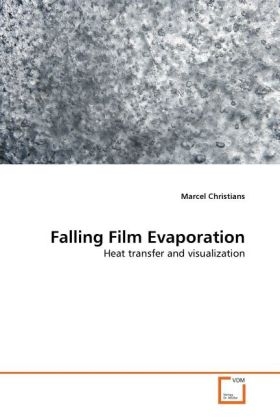Mehr lesen
Horizontal falling film evaporators have the potential of displacing flooded evaporators in industry, due to advantages such as lower required refrigerant charge and lower pressure drop. However, there is a need to improve the understanding of falling film evaporation mechanisms to provide accurate thermal design methods. Experimental data (heat transfer and visualization) taken in falling film, pool boiling and in adiabactic conditions are used to study the physical phenomena governing the falling film evaporation process. Measurements of the local heat transfer coefficient were obtained and utilized to generate new prediction methods, including a method for predicting the onset-of- dryout film flow rate during falling film evaporation, local pool boiling and falling film heat transfer prediction methods and a falling film multiplier prediction method.
Über den Autor / die Autorin
Marcel Christians received his B.Eng., B.Eng.(Hons) and M.Eng.degrees in Mechanical Engineering (cum laude) at the Universityof Pretoria in Pretoria, South Africa. He is currently employedat the Laboratory of Heat and Mass Transfer, at the Swiss FederalInstitute of Technology in Lausanne, Switzerland.

